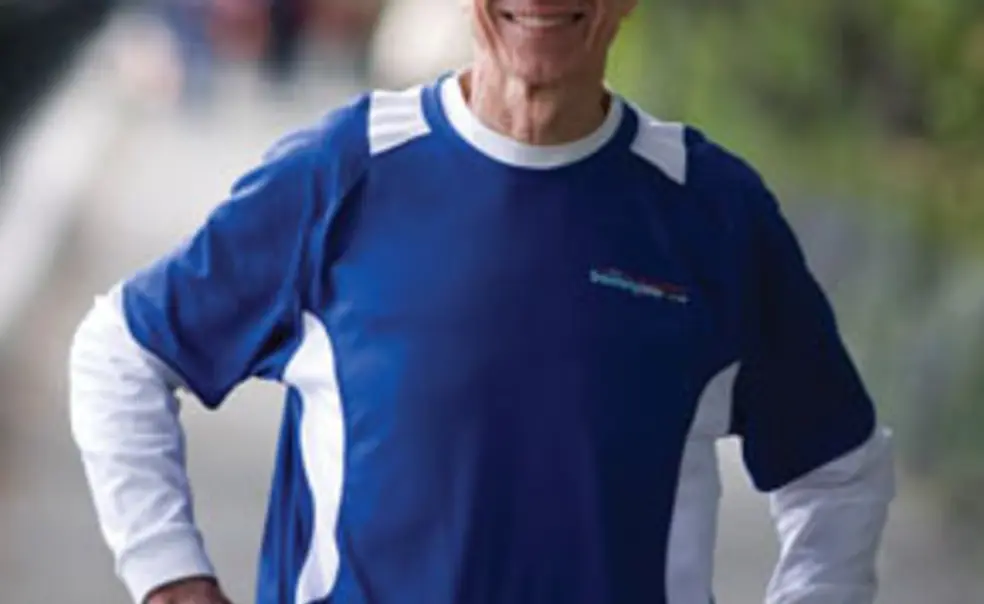George Hirsch ’56 did not mean to run two marathons three weeks apart, at age 75. After bloody tumbles near the finish of his previous two, in 2007, he’d promised his wife, Shay, that he was done with marathoning. And he meant it.
But Hirsch felt so good during a 17-mile run last August that he began to have second thoughts: Not only was 2009 the 40th anniversary of the New York City Marathon — organized by the New York Road Runners Club, of which he is chairman — but it was also the 20th anniversary of his marriage to Shay, whom he met one day and literally chased after the next, jumping in at the start of a marathon, spotting her finally at five miles, and then running the rest of the way beside her, even though he hadn’t intended to run at all.
Hirsch’s plan was to run the New York City Marathon seriously after using Chicago, three weeks earlier, as a long training run. But in Chicago, when he stopped at 20 miles to ask a policeman the fastest way back to his hotel, he was told that the most direct route was to continue along the marathon course. Reminding himself with each step that the real goal was New York, he ran to the finish feeling fantastic. His time was 3:58:39, and he won his age group by more than 33 minutes.
New York was a different story. Despite being accompanied by a revolving escort of legendary runners including four-time Boston Marathon champion Bill Rodgers, by the end of the fifth mile Hirsch was feeling lousy. “It was getting very hard, very early,” he says. By the halfway mark he’d already walked some and knew that finishing was a worthy goal. He did, in what he calls the hardest of the 35 or so marathons he’s run. His time was 4:06:14; here too, he won his age group.
All this running is a far cry from the days when Hirsch was, by his own admission, a “very mediocre” quarter-miler on the Princeton track team. After working at Time Inc. and going to Harvard Business School, Hirsch took up running again in 1968. He’d just become the founding publisher of New York magazine and could feel the toll the long hours were taking on his health and fitness.
He began running around the block with a stopwatch in hand and recording his times in a book. “It might take as much as three minutes,” Hirsch chuckles. He soon realized that if he ran slower he could run farther. A small community of wonderful oddballs was forming around running, but this was still four years before Yalie Frank Shorter would win the Olympic marathon in Munich and launch the running boom that Hirsch, as publisher of first The Runner and then Runner’s World, would do as much as anyone to promote and shape.
La Cucina ItalianaMerrell Noden ’78 is a frequent PAW contributor.













No responses yet